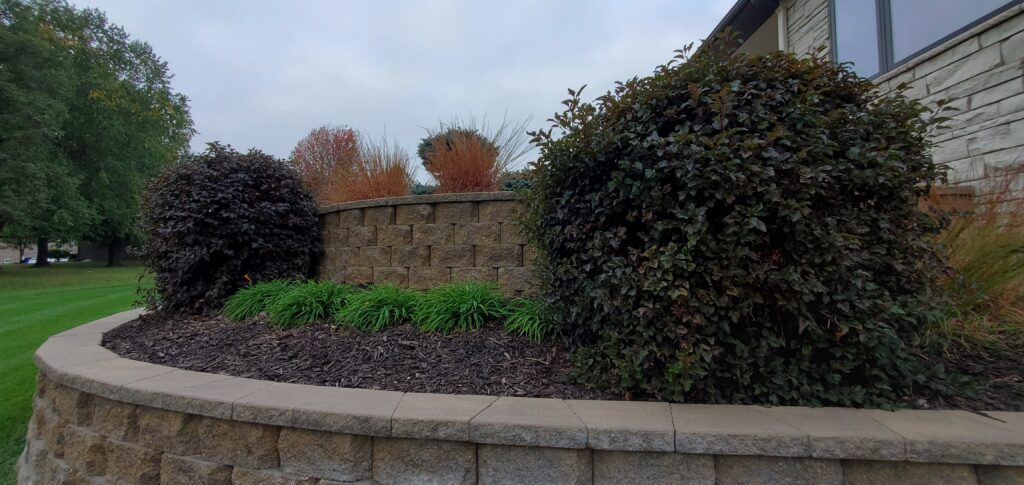Now is the time to do some summer pruning. What, you prune trees and plants in the hottest part of the year? Well, yes, for certain plants. Pruning in the summer helps some plant rejuvenate, removing legginess and promoting fall flower production. Also, this is the best time to remove watersprouts from fruit trees, and prune your early sap-flowing trees.
Typically, most gardeners want to rest in July, before the onslaught of tomatoes, peppers, and other garden vegetables coming in August and beyond. It is hot, and I too would rather lay in the hammock with a good book, go swimming, or attend backyard barbeques. But some pruning is essential this time of the year, and there is ample time to do it (now that weeds have slowed down too).
But what kinds of plants are ready for pruning in July?
Pruning Shade Trees in Summer
Many arborists will incorrectly recommend that you prune nothing in summer, because of the threat for disease or insects. But, if your tree is healthy, and has no other stressors than heat, you need not worry about that problem. Besides, we are not pruning trees which have external existing threats like ash, oak, or elm. We are getting to the maples, walnuts, and birches. These trees, if pruned in winter, often have major sap flows during the freeze-thaw cycles throughout winter. Thus, it is best to prune them when the sap is spread throughout the tree, which is summer in Northeast Kansas.
Maples and walnuts here in the Central Great Plains are also tapped for their sap to make maple and walnut syrup. So adding a stress like pruning into winter when you need the sap for syrup, is unnecessary.
Now is the time to remove rubbing and crossing limbs, raise the tree up if desired, and pruned broken or damaged limbs. Dead limbs can be removed at any time of the year. Be sure to make your cut 1/4 inch outside of the branch-bark collar. See photo below.

Fruit Trees
If you are like me, then you have done the majority of your fruit tree pruning in February, in preparation for the year. But the removal of a lot of limbs from fruit trees often results in vertical growth off the main branches of the trees. These are called watersprouts. And they are not needed. Summer is the best time to prune these off the tree. Doing so encourages the tree to put energy into the fruit, and allows for light to better penetrate the canopy.
The types of fruit trees which have the most watersprout production are peaches, apples, and nectarines. This is because they get the most amount of pruning in the winter. Cherries, plums, and apricots rarely need to be pruned, so they do not produce watersprouts.
Pruning Spring Flowering Shrubs
By now, many of your garden plants have had their main flush of flowers and are settling down for summer. June through July is the best time to prune back these shrubs, to allow time for new growth which will have next year’s flower buds. By pruning them now, you will encourage a better crop of flowers next season. If you wait too long, like when it cools off in September, the plant may not have enough time to set new buds. Spring blooming shrubs produce flower buds on the previous season’s growth.
Shrubs which bloom in spring and should be pruned in summer include the following.
- Forsythia
- Mockorange
- Weigela
- Deutzia
- Fothergilla
- Vanhoutte and Bridal Wreath Spirea
- Most viburnums
The pruning you do should be to shape or head back the plant, not to rejuvenate. Rejuvenation pruning should be done in late fall or winter, when the plant is dormant. Rejuvenation pruning means cutting the plant back to the ground or removing more than 75% of the plant to encourage new growth.
Summer Shearing
Shearing, or removing an even amount (usually) of growth from the plant should not be done on evergreens, or summer flowering shrubs. However, you can shear back several shrubs which respond quickly to pruning. These include:
- Ninebarks
- Weigela hedges
- Honeysuckle
- Dogwood
- Buttonbush (after flowering)
- Arrowwood viburnum
- Deciduous privet
- Japanese spirea (after flowering)

Rejuvenation Pruning of Perennials
Now is the time when I starting rejuvenating perennials to get new growth and a second large flush of flowers. Some perennials benefit in doing this, and are also less likely to need division as often. Daylilies for example, should be divided every 3 to 4 years, but by cutting them down each July, I can extend that time to once every 5 to 7 years.
- Daylilies can be cut back to ground or 2 inches tall in July or August.
- Perennial salvia should be cut back to the lowest set of basal leaves.
- Lavender can be pruned now, but do not remove more than 8 inches of growth.
- Mints such as peppermint and spearmint can be pruned down to 4 inches tall.
- Catmint should be cut back by 1/3 or 1/2.

Other Summer Tasks
- Remember to fertilize roses with rose formulated fertilizer. Do not fertilize roses after August 1st.
- Dead-head roses for faster rebloom.
- Strawberries – renovate June-bearing strawberry beds. After they are done producing, first mow off the plants and then till strips to clean out the mother plants. Till opposite rows next season. Fertilize with a balanced garden fertilizer for larger, healthier plants and they will set more fruit buds in September and October for next year’s harvest!
- Remove old raspberry canes after harvest
Conclusion
While midsummer is not the best time for a lot of gardening chores, it is the best time to prune certain trees and watersprouts, as wells to rejuvenate perennials. Spending time outside in the heat to take care of these tasks will reward your efforts with increase fruits and flower production in the long run. So brave the heat and enjoy the labor before the fruit!
Happy planting!




